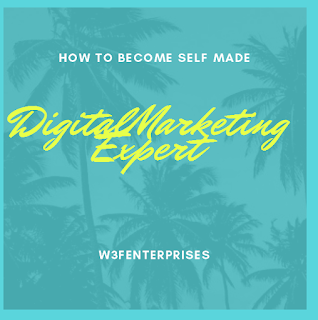The first steps to a new job in Digital Marketing II
Apply for roles with polished CVs and covering letters
In this write up, I’ll show you how to create a CV
that clearly shows potential employers what you can offer. You’ll also
learn how to write a clear and persuasive covering letter that can land
you that all-important interview.
Let's start with how to write a great CV.
Think of your CV as a written summary of your personal, professional and social attributes that proves why you're the ideal candidate for a job.
While there are no official rules for how it should look, here are some key points you’ll definitely want to include:
- your contact information—such as your name, phone number and email
- a summary section at the top, describing in 2-3 sentences who you are and what you have to offer
- details of your previous work experience, including company names, job titles, and start and end dates
- add a brief summary of your roles and achievements that emphasise the skills required for the job being applied for
- you’ll also want to include details of any diplomas, certificates or exams you’ve passed along with dates and possibly grades if this information is relevant for your industry.
A good practice is to keep your CV limited to only the most relevant and recent information and share it in a PDF format.
Take into account recruiters and employers go through dozens of CVs for each open role. Make sure your CV stands out, and always tailor your CV to the job you’re applying for.
In summary, here are tips for writing a great CV:
- keep it concise and clear, placing the most important and recent information at the top
- remember to proofread for correct spelling and grammar
- avoid overuse of formatting, such as bold, italics or underlining
- stay clear of jargon that won’t be understood by your potential employer (such as acronyms and company specific terms).
Depending on the kind of jobs you’re applying for, you could also consider creating another type of CV—like a LinkedIn profile, or even a personal website.
LinkedIn is a great place to both boost your visibility to employers and connect with like minded professionals.
When creating a LinkedIn profile, ensure your headline is clear and simple and use the summary section to include a mix of the past, present and future ambitions. You should make the most of recommendations from a previous employer or colleague, and publish these on your profile.
When it comes to describing your previous roles - ensure you focus on skills relevant to the job you’re looking for and showcase that you have the relevant experience.
Remember to keep your profile up to date. That shows potential recruiters you’re organised and passionate about what you can offer them.
Finally, ensure your profile is public and customise your URL.
Now you’ve completed your CV, it’s time to write a formal covering letter that will help add colour to your application and summarise what you offer.
Always make the effort to identify and address the recruiter or hiring manager directly, avoiding generic “To Whom It May Concern” openings where possible. The covering letter is often the first impression you make, so it’s important they feel what they receive was written specifically for them.
Keep the covering letter short and professional, and avoid simply repeating what you’ve already stated in your CV. Instead, explain why you’re a great match for this specific role in three or four paragraphs. Start by including your personal motivations, and articulate why you’re so well suited for the role. Be careful not to overuse the word “I”, and keep it focused to how you can help their organisation.
Finally, close your letter with a clear next step, such as “I look forward to hearing from you” or similar. If submitting a hardcopy, sign it with ink for that handwritten touch.
If you’re emailing your CV and covering letter, then the email you write should follow the same rules as before.
Keep your subject line clear and simple, such as “Job application - Role title - YOUR NAME", or include the job reference number if one exists.
Now that you have the tools to create those all-important documents, you’re ready to start searching and applying for jobs with confidence. Remember to proofread your CV and covering letters, and always tailor them for the specific job you’re applying for.
Let's start with how to write a great CV.
Think of your CV as a written summary of your personal, professional and social attributes that proves why you're the ideal candidate for a job.
While there are no official rules for how it should look, here are some key points you’ll definitely want to include:
- your contact information—such as your name, phone number and email
- a summary section at the top, describing in 2-3 sentences who you are and what you have to offer
- details of your previous work experience, including company names, job titles, and start and end dates
- add a brief summary of your roles and achievements that emphasise the skills required for the job being applied for
- you’ll also want to include details of any diplomas, certificates or exams you’ve passed along with dates and possibly grades if this information is relevant for your industry.
A good practice is to keep your CV limited to only the most relevant and recent information and share it in a PDF format.
Take into account recruiters and employers go through dozens of CVs for each open role. Make sure your CV stands out, and always tailor your CV to the job you’re applying for.
In summary, here are tips for writing a great CV:
- keep it concise and clear, placing the most important and recent information at the top
- remember to proofread for correct spelling and grammar
- avoid overuse of formatting, such as bold, italics or underlining
- stay clear of jargon that won’t be understood by your potential employer (such as acronyms and company specific terms).
Depending on the kind of jobs you’re applying for, you could also consider creating another type of CV—like a LinkedIn profile, or even a personal website.
LinkedIn is a great place to both boost your visibility to employers and connect with like minded professionals.
When creating a LinkedIn profile, ensure your headline is clear and simple and use the summary section to include a mix of the past, present and future ambitions. You should make the most of recommendations from a previous employer or colleague, and publish these on your profile.
When it comes to describing your previous roles - ensure you focus on skills relevant to the job you’re looking for and showcase that you have the relevant experience.
Remember to keep your profile up to date. That shows potential recruiters you’re organised and passionate about what you can offer them.
Finally, ensure your profile is public and customise your URL.
Now you’ve completed your CV, it’s time to write a formal covering letter that will help add colour to your application and summarise what you offer.
Always make the effort to identify and address the recruiter or hiring manager directly, avoiding generic “To Whom It May Concern” openings where possible. The covering letter is often the first impression you make, so it’s important they feel what they receive was written specifically for them.
Keep the covering letter short and professional, and avoid simply repeating what you’ve already stated in your CV. Instead, explain why you’re a great match for this specific role in three or four paragraphs. Start by including your personal motivations, and articulate why you’re so well suited for the role. Be careful not to overuse the word “I”, and keep it focused to how you can help their organisation.
Finally, close your letter with a clear next step, such as “I look forward to hearing from you” or similar. If submitting a hardcopy, sign it with ink for that handwritten touch.
If you’re emailing your CV and covering letter, then the email you write should follow the same rules as before.
Keep your subject line clear and simple, such as “Job application - Role title - YOUR NAME", or include the job reference number if one exists.
Now that you have the tools to create those all-important documents, you’re ready to start searching and applying for jobs with confidence. Remember to proofread your CV and covering letters, and always tailor them for the specific job you’re applying for.
A CV or covering letter is often the first
impression you get to make with prospective employers, so it's critical
these documents make a mark. Whether you're delivering your story on
paper or on an online platform like LinkedIn, you will need to include
some key points so that your story comes across clearly and
persuasively.
Happy reading
Wasiu Folorunsho Emiola
(w3FEnterprises,Lagos,Nigeria)


Comments
Post a Comment